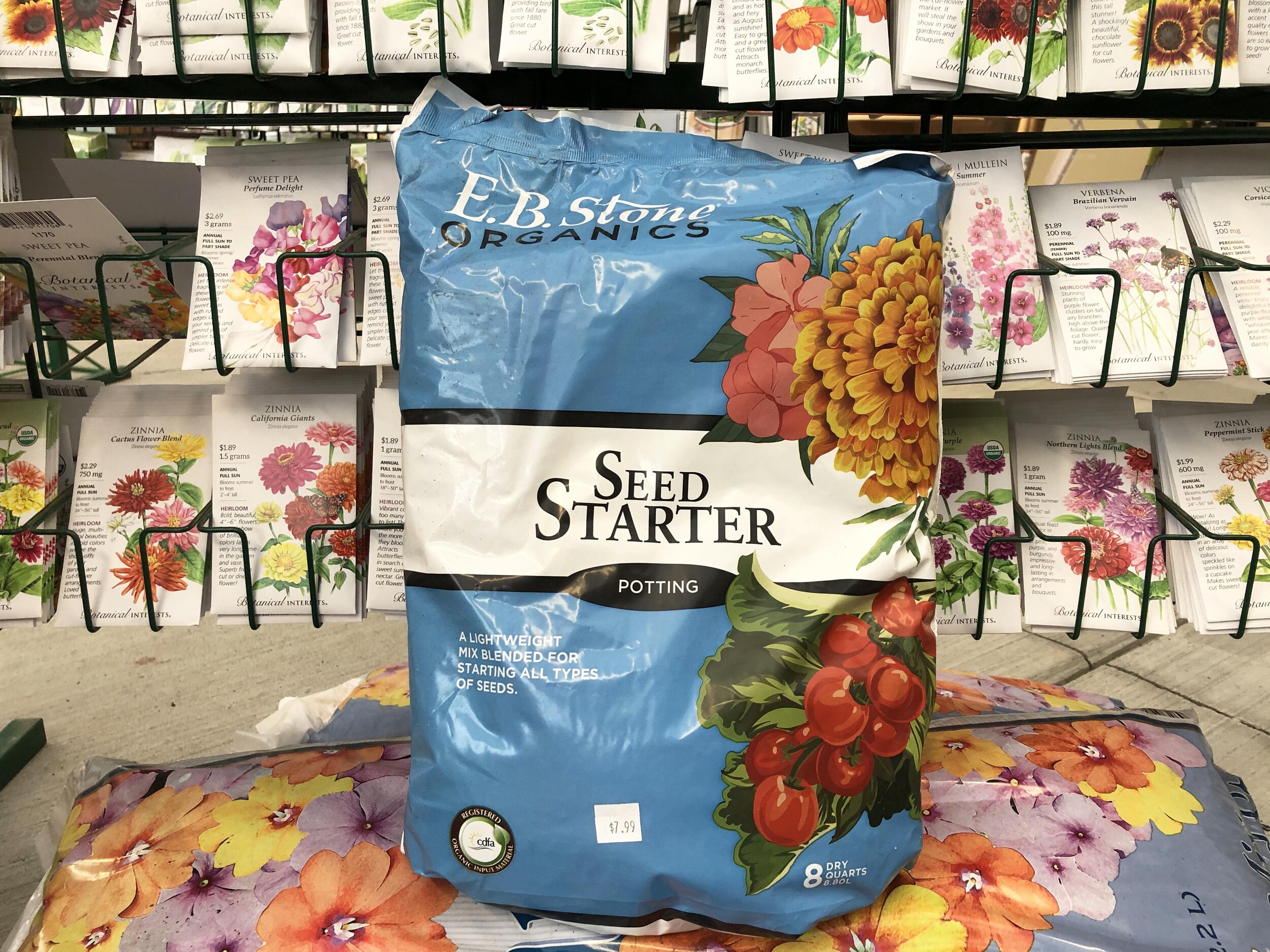January is seed starting time and like a lot of things in life, it’s not always as easy as we professionals make it look, (nor I might add is it the kind of activity that you can walk away from for a week or two, like knitting). To be successful you have to show up on a consistent basis and pay attention to what is happening.
There are hundreds of online resources that can help a newcomer learn all about the ins and outs of growing plants from seed, but the first place I always look is the seed packet. There you will find the essentials such as when to sow, how deep to bury the seed, how long it takes for germination, when to transplant into the garden, and other growing tips including when to harvest. For the most part, you don’t need to look anywhere else.
For starters, use a good quality “seed starting” soil mix that is finely screened and has good drainage. Not all seeds are fussy about the soil (especially the larger ones like beans and corn) but for seeds that are no bigger than the end of a pin, it is critical to have very fine soil that you can “dust” over the top of them in order for them to actually germinate. Many seeds veritably need light to germinate and if they are too deep, they will not grow.
Soil moisture is also very critical and probably the single most factor that leads to failure. Think of a “wrung out sponge” that is moist to the touch but has no free water that can be squeezed out of it - maintain that level of moisture throughout the entire germination process. As the plants grow, you can give them a little more water. Also, make sure there is good drainage in the pots or flats that you are using. Too much or too little moisture will both spell disaster.
Soil temperature is another factor that can effect germination. Cool season crops, like lettuce and spinach, are happy with 45° to 55° soil while cucumbers and basil need at least 60° and would truly prefer 75° to 85° temperatures. Obviously, those kinds of temps are challenging to create for your seeds and the best way is to use a heating mat under your containers - just be sure to turn it off once your seeds germinate.
Most seeds need some level of light to germinate, and once they are up, the brighter the better. High light will produce short, stocky and strong stems whereas low light will give you weak and spindly stems.
Thinning is critical. For starters, don’t sow your seeds too densely. Mixing a teaspoon of seeds with a teaspoon of fine sand is the easiest way to spread them out. After they have germinated, continue to thin if needed.
“Hardening off” is the process of acclimating your tender young seedling to the brutal reality of the outside world. This is done by slowly holding back on the water, lowering the temperatures, and generally slowing down the growth.
Some seeds are happier being directly sown into the garden (like carrots), while others like tomatoes and cucumbers are happy to be started inside and transplanted outside when appropriate. If you only need a few plants, then transplants probably make more sense even though they are a little bit more expensive.
There is nothing quite as magical as watching a row of seeds germinate and transform into tiny little plants. If you follow these tips along with the few basic guidelines found on the seed packets, you should have success!




